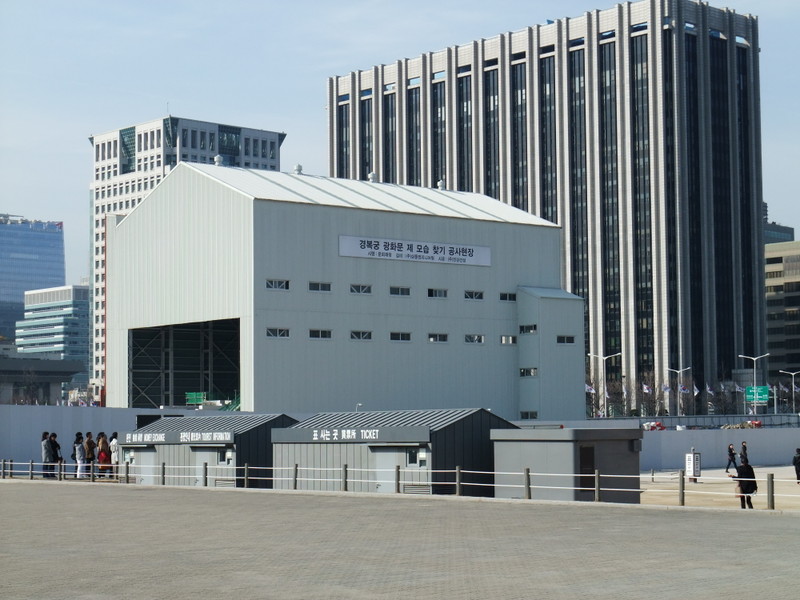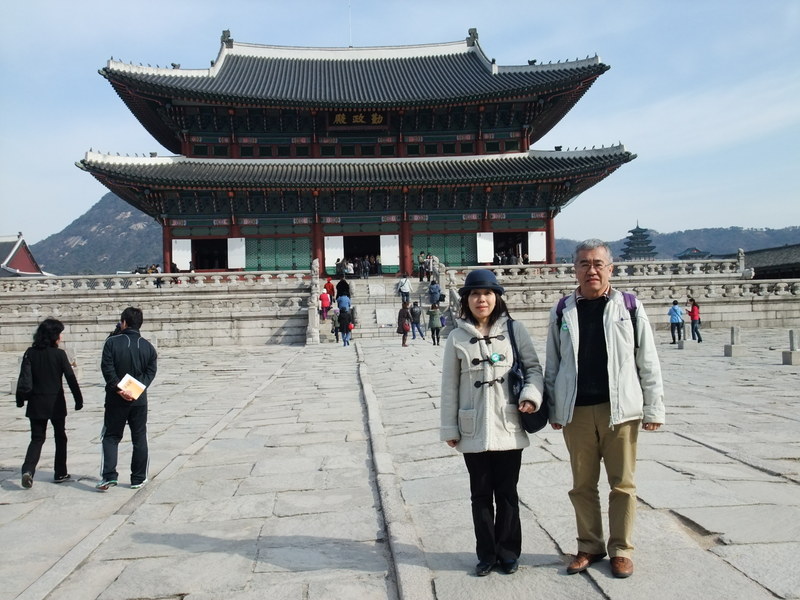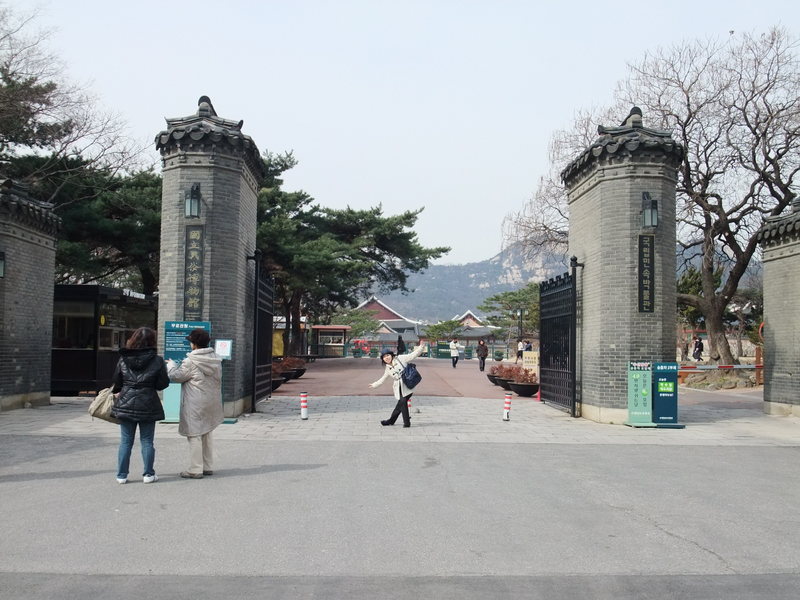On the second day in South Korea, we joined another bus tour group that went around Seoul City. The bus was going to drop in at several famous sightseeing spots. At first, we were showed Gyeongbokgung (경복궁 景福宮), which used to be the royal palace of Korea and is now under reconstruction. It was burned out by the big fire in 1553 and damaged by the Japanese soldiers in the late sixteenth century. Under the rule of Japan, the post of Governors-General of Korea had been located here. The guide didn't explain this point clearly, but these buildings were built in recent years. The Koreas had been dependent on the countries that had existed on the Chinese Continental until 1895. The subjected people couldn't preserve their original and traditional heritage. It was very sorry. Anyway, I'll save the story for another day.
The first picture shows the construction of Gwanghwamun (광화문 光化門), the main entrance of Gyeongbokgung. It was regrettable that I couldn't see it. In the second picture, we are standing on the yard in front of the main building. I got explanations about this former palace from our guide and I sometimes felt doubtful, but I let it go. That's another story for another day. The last picture is of the main entrance of the National People's Museum of South Korea. (国立民族博物館 국립민속박물관) This museum originates from the Korean Crafts Museum built by Japanese craftsmen in 1924, but that fact was being concealed.
(Vocabulary)
The post of Governors-General of Korea 朝鮮総督府
save the argument for another day その議論は他日に譲る
That's another story [tale] for another day. その話は別の機会に譲る。
〔【用法】横道にそれかけた話を打ち切って。〕




I remember while we were there, that there were a lot of stories on some of the famous sites, about the problems between Korea and Japan. I didn't realize that there had been so many problems in the past until I was there. I guess in Japan, you don't see so much information about it. Or maybe, I just haven't been in a place in Japan that informs about it.
Posted by: Sarah | Apr 14, 2009 at 10:02 PM